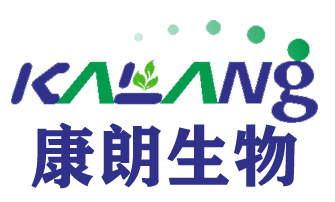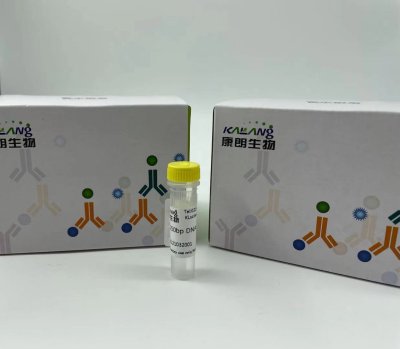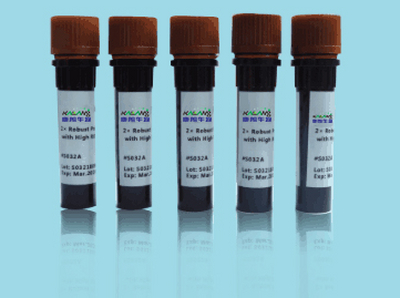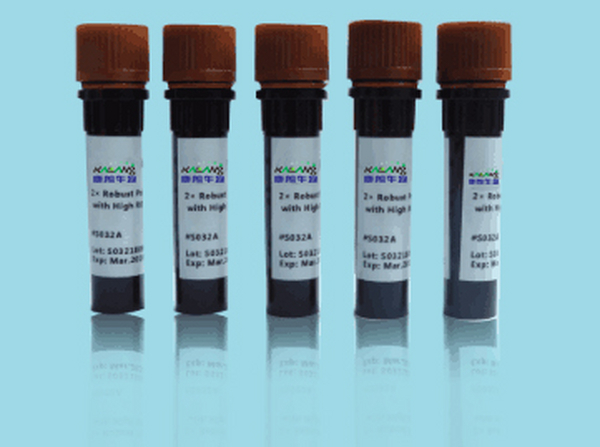QQ:3002763590


客服电话:021-61998208
IL-27A rabbit Polyclonal Antibody
IL-27A抗体
IL-27A抗体应用:IHC-p 1:50-200, ELISA 1:10000-20000 interleukin 27(IL27) Homo sapiens The protein encoded by this gene is one of the subunits of a heterodimeric cytokine complex. This protein is related to interleukin 12A (IL12A). It interacts with Epstein-Barr virus induced gene 3 (EBI3), a protein similar to interleukin 12B (IL12B), and forms a complex that has been shown to drive rapid expansion of naive but not memory CD4(+) T cells. The complex is also found to synergize strongly with interleukin 12 to trigger interferon gamma (IFNG) production of naive CD4(+) T cells. The biological effects of this cytokine are mediated by the class I cytokine receptor (WSX1/TCRR). [provided by RefSeq, Jul 2008],
IL-28 rabbit Polyclonal Antibody
IL-28抗体
IL-28抗体应用:Western Blot: 1/500 - 1/2000. IHC-p: 1/100-1/300. ELISA: 1/20000. interferon lambda 2(IFNL2) Homo sapiens This gene encodes a cytokine distantly related to type I interferons and the IL-10 family. This gene, interleukin 28B (IL28B), and interleukin 29 (IL29) are three closely related cytokine genes that form a cytokine gene cluster on a chromosomal region mapped to 19q13. Expression of the cytokines encoded by the three genes can be induced by viral infection. All three cytokines have been shown to interact with a heterodimeric class II cytokine receptor that consists of interleukin 10 receptor, beta (IL10RB) and interleukin 28 receptor, alpha (IL28RA). [provided by RefSeq, Jul 2008],
IL-28Rα rabbit Polyclonal Antibody
IL-28Rα抗体
IL-28Rα抗体应用:Western Blot: 1/500 - 1/2000. ELISA: 1/40000. interferon lambda receptor 1(IFNLR1) Homo sapiens The protein encoded by this gene belongs to the class II cytokine receptor family. This protein forms a receptor complex with interleukine 10 receptor, beta (IL10RB). The receptor complex has been shown to interact with three closely related cytokines, including interleukin 28A (IL28A), interleukin 28B (IL28B), and interleukin 29 (IL29). The expression of all three cytokines can be induced by viral infection. The cells overexpressing this protein have been found to have enhanced responses to IL28A and IL29, but decreased response to IL28B. Three alternatively spliced transcript variants encoding distinct isoforms have been reported. [provided by RefSeq, Jul 2008],
IL-29 rabbit Polyclonal Antibody
IL-29抗体
IL-29抗体应用:Western Blot: 1/500 - 1/2000. ELISA: 1/20000. interferon lambda 1(IFNL1) Homo sapiens This gene encodes a cytokine distantly related to type I interferons and the IL-10 family. This gene, interleukin 28A (IL28A), and interleukin 28B (IL28B) are three closely related cytokine genes that form a cytokine gene cluster on a chromosomal region mapped to 19q13. Expression of the cytokines encoded by the three genes can be induced by viral infection. All three cytokines have been shown to interact with a heterodimeric class II cytokine receptor that consists of interleukin 10 receptor, beta (IL10RB) and interleukin 28 receptor, alpha (IL28RA). [provided by RefSeq, Jul 2008],
IL-2Rα rabbit Polyclonal Antibody
IL-2Rα抗体
IL-2Rα抗体应用:Western Blot: 1/500 - 1/2000. ELISA: 1/20000. interleukin 2 receptor subunit alpha(IL2RA) Homo sapiens The interleukin 2 (IL2) receptor alpha (IL2RA) and beta (IL2RB) chains, together with the common gamma chain (IL2RG), constitute the high-affinity IL2 receptor. Homodimeric alpha chains (IL2RA) result in low-affinity receptor, while homodimeric beta (IL2RB) chains produce a medium-affinity receptor. Normally an integral-membrane protein, soluble IL2RA has been isolated and determined to result from extracellular proteolyisis. Alternately-spliced IL2RA mRNAs have been isolated, but the significance of each is presently unknown. Mutations in this gene are associated with interleukin 2 receptor alpha deficiency.[provided by RefSeq, Nov 2009],
IL-2Rα rabbit Polyclonal Antibody
IL-2Rα抗体
IL-2Rα抗体应用:Western Blot: 1/500 - 1/2000. Immunofluorescence: 1/200 - 1/1000. ELISA: 1/20000. interleukin 2 receptor subunit alpha(IL2RA) Homo sapiens The interleukin 2 (IL2) receptor alpha (IL2RA) and beta (IL2RB) chains, together with the common gamma chain (IL2RG), constitute the high-affinity IL2 receptor. Homodimeric alpha chains (IL2RA) result in low-affinity receptor, while homodimeric beta (IL2RB) chains produce a medium-affinity receptor. Normally an integral-membrane protein, soluble IL2RA has been isolated and determined to result from extracellular proteolyisis. Alternately-spliced IL2RA mRNAs have been isolated, but the significance of each is presently unknown. Mutations in this gene are associated with interleukin 2 receptor alpha deficiency.[provided by RefSeq, Nov 2009],
IL-2Rβ rabbit Polyclonal Antibody
IL-2Rβ抗体
IL-2Rβ抗体应用:Western Blot: 1/500 - 1/2000. ELISA: 1/20000. interleukin 2 receptor subunit beta(IL2RB) Homo sapiens The interleukin 2 receptor, which is involved in T cell-mediated immune responses, is present in 3 forms with respect to ability to bind interleukin 2. The low affinity form is a monomer of the alpha subunit and is not involved in signal transduction. The intermediate affinity form consists of an alpha/beta subunit heterodimer, while the high affinity form consists of an alpha/beta/gamma subunit heterotrimer. Both the intermediate and high affinity forms of the receptor are involved in receptor-mediated endocytosis and transduction of mitogenic signals from interleukin 2. The protein encoded by this gene represents the beta subunit and is a type I membrane protein. The use of alternative promoters results in multiple transcript variants encoding the same protein. The protein is primarily expressed in the hematopoietic system. The use by some variants of an alternate promoter
IL-2Rβ rabbit Polyclonal Antibody
IL-2Rβ抗体
IL-2Rβ抗体应用:Western Blot: 1/500 - 1/2000. ELISA: 1/20000. interleukin 2 receptor subunit beta(IL2RB) Homo sapiens The interleukin 2 receptor, which is involved in T cell-mediated immune responses, is present in 3 forms with respect to ability to bind interleukin 2. The low affinity form is a monomer of the alpha subunit and is not involved in signal transduction. The intermediate affinity form consists of an alpha/beta subunit heterodimer, while the high affinity form consists of an alpha/beta/gamma subunit heterotrimer. Both the intermediate and high affinity forms of the receptor are involved in receptor-mediated endocytosis and transduction of mitogenic signals from interleukin 2. The protein encoded by this gene represents the beta subunit and is a type I membrane protein. The use of alternative promoters results in multiple transcript variants encoding the same protein. The protein is primarily expressed in the hematopoietic system. The use by some variants of an alternate promoter
IL-2Rβ rabbit Polyclonal Antibody
IL-2Rβ抗体
IL-2Rβ抗体应用:Western Blot: 1/500 - 1/2000. Immunohistochemistry: 1/100 - 1/300. ELISA: 1/20000. interleukin 2 receptor subunit beta(IL2RB) Homo sapiens The interleukin 2 receptor, which is involved in T cell-mediated immune responses, is present in 3 forms with respect to ability to bind interleukin 2. The low affinity form is a monomer of the alpha subunit and is not involved in signal transduction. The intermediate affinity form consists of an alpha/beta subunit heterodimer, while the high affinity form consists of an alpha/beta/gamma subunit heterotrimer. Both the intermediate and high affinity forms of the receptor are involved in receptor-mediated endocytosis and transduction of mitogenic signals from interleukin 2. The protein encoded by this gene represents the beta subunit and is a type I membrane protein. The use of alternative promoters results in multiple transcript variants encoding the same protein. The protein is primarily expressed in the hematopoietic system. The use by s
IL-2Rβ rabbit Polyclonal Antibody
IL-2Rβ抗体
IL-2Rβ抗体应用:Western Blot: 1/500 - 1/2000. Immunofluorescence: 1/200 - 1/1000. ELISA: 1/10000. interleukin 2 receptor subunit beta(IL2RB) Homo sapiens The interleukin 2 receptor, which is involved in T cell-mediated immune responses, is present in 3 forms with respect to ability to bind interleukin 2. The low affinity form is a monomer of the alpha subunit and is not involved in signal transduction. The intermediate affinity form consists of an alpha/beta subunit heterodimer, while the high affinity form consists of an alpha/beta/gamma subunit heterotrimer. Both the intermediate and high affinity forms of the receptor are involved in receptor-mediated endocytosis and transduction of mitogenic signals from interleukin 2. The protein encoded by this gene represents the beta subunit and is a type I membrane protein. The use of alternative promoters results in multiple transcript variants encoding the same protein. The protein is primarily expressed in the hematopoietic system. The use by so
最新动态
-

Anti-GNGT1 KL20092-001(50ul)
2021-10-11 -

Anti-GNGT1 antibody(50ul) KL20093-001
2021-10-11 -

MUC5AC (PT2058) mouse Monoclonal Antibody
2021-01-06 -

mOrange mouse Monoclonal Antibody(Mix)
2021-01-05
热门标签
- Histone H3 rabbit Polyclonal Antibody Histone H3抗体
- EGFR rabbit Polyclonal Antibody EGFR抗体
- Cy3 Conjugated
- AbFluor™ 555 Conjugated
- AbFluor™ 680 Conjugated
- AbFluor™ 350 Conjugated
- AbFluor™ 647 Conjugated
- AbFluor™ 594 Conjugated
- AbFluor™ 405 Conjugated
- Cy5 Conjugated
- AbFluor™ 488 Conjugated
- Cyclophilin B抗体 Cyclophilin B Monoclonal Antibody(2B10)
- COX IV抗体 COX IV Monoclonal Antibody(6C8)
- PCNA抗体 PCNA Monoclonal Antibody(12D10)
- FAK rabbit Polyclonal Antibody FAK抗体
邮箱:3002763590@qq.com
电话:021-61998208

扫码关注微信公众号






